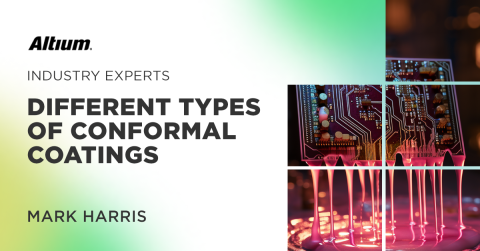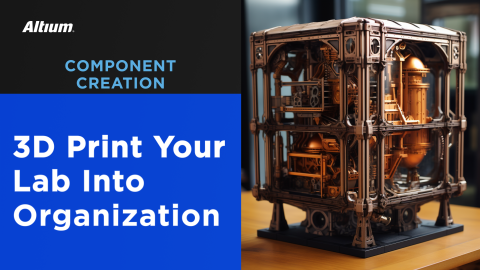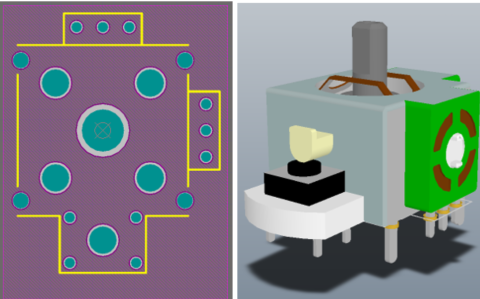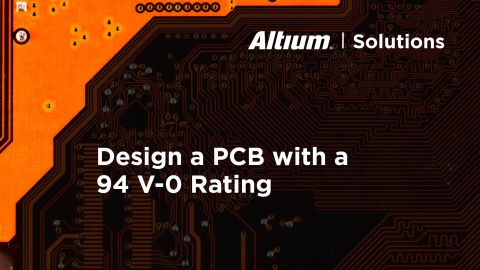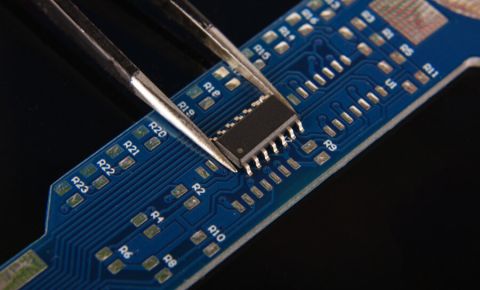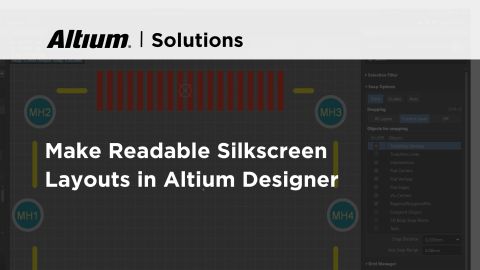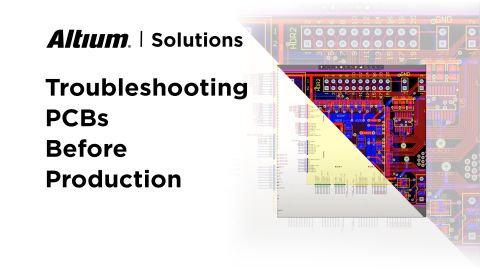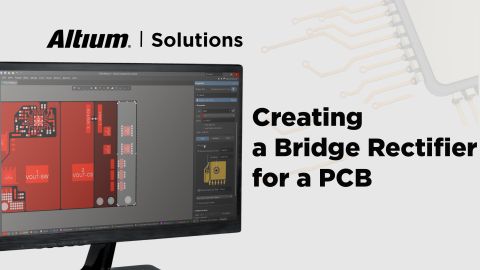How to Design an AC to DC Converter Circuit in Altium Designer

An AC-to-DC converter circuit does exactly as its name implies: it takes a harmonic AC input and converts it to a DC output. These circuits are simply from a high level and when operating at low power on a breadboard, but a real AC to DC converter circuit is more complex than just a transformer and rectifier circuit. Finding the right components for these circuits and running accurate power simulations takes the right PCB design software that includes powerful circuit design tools.
Whether you need to design a power supply, regulator, converter, or other power systems, Altium Designer on Altium 365 has the design utilities you need. The best part of Altium Designer is its integrated design environment, where everything needed for PCB design is included in a single program. Read our guide to learn more about designing AC-to-DC converter circuits and the other supporting circuitry you need for power systems.
ALTIUM DESIGNER
A unified PCB design package that integrates circuit design features with a powerful PCB editor and SPICE simulation package.
Almost every device that plugs into wall power will need to convert AC power from the wall into DC power that can be used by integrated circuits. This means many products require an AC-to-DC converter circuit, as well as other circuitry like a power regulator, PFC circuit, and control circuitry for high-efficiency power conversion. Setting yourself up for success takes the right design strategy, and it requires integrating these various portions of a system into a complete product.
Production-grade power systems require a safe, functional layout, and the design also needs to be verified with simulations to ensure it operates as intended. When you use an integrated design package, you can create your power converter schematics, a high-quality PCB layout, and circuit simulations in a single program.
Designing an AC-to-DC Converter Circuit
An AC-to-DC converter circuit relies on rectification, where input AC power is converted into an unstable DC output with some residual ripple. The basic components involved in an AC-to-DC converter circuit are:
- Transformer: This steps up or down the grid power to a value that is useful by the load in the system. The transformer turns ratio will determine the voltage and current output to the diode bridge and capacitor.
- Diode bridge rectifier: This small circuit takes the absolute value of the AC input signal, which gives a time-varying signal with a single polarity. The design requirement is that the diodes in the bridge rectifier circuit operate above their forward current.
- Capacitor: A large capacitor is used as a filter to stabilize the rectified AC signal and produce a DC voltage with some leftover ripple. A larger capacitor with smaller effective series resistance is the ideal component to ensure high charge capacity and fast discharge rate.
This list of components is the minimum required to create an AC-to-DC converter circuit, and an example is shown below. The AC-to-DC converter you design will need to be created in a powerful schematic editor with real component data and simulation models, and you’ll need the best design software to get the job done.
Create Schematics With Real Components for Your AC-to-DC Converter Circuit
Make sure to use the best schematic design tools with integrated component libraries and connections to the PCB supply chain to design your AC-to-DC converter circuit. The schematic editor in Altium Designer includes a powerful SPICE simulation engine that is easy to use and takes electrical data directly from your component models. With access to everything in a single program, you can design a high-quality power converter and verify the design quickly and easily.
- Altium Designer includes the SPICE simulation features you need to verify your AC-to-DC converter design and ensure high-efficiency power conversion.
Learn more about running SPICE simulations with power electronics in Altium Designer.
- When you need to design more complex power conversion circuits, use the best hierarchical schematic editor to help you stay organized.
- A transformer is always used on the input to an AC-to-DC converter, but they are also used with switching regulator circuits to build isolated power supplies.
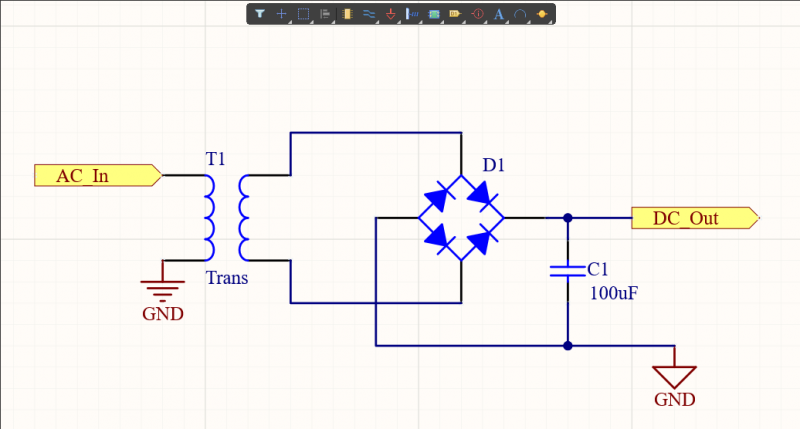
A basic AC to DC converter circuit with a transformer and diode bridge rectifier, created in Altium Designer.
Ensure High-Efficiency Conversion in Power Electronics
All power electronics should be designed to ensure high power conversion efficiency, but this often takes more than just a full-wave bridge rectifier circuit. Additional components and circuits are needed to ensure low-noise, high-efficiency power conversion, particularly when supplying power to a regulator circuit. AC-to-DC conversion is just one part of a power regulation strategy, and the entire system needs to be considered to minimize losses and noise during power conversion.
The most efficient power regulation strategy for most systems is through the use of a switching regulator, particularly when designing an AC-to-DC converter circuit to draw from wall power. Some additional circuitry that is needed for power conversion includes:
- A power factor correction circuit, or PFC circuit, smoothing out the current drawn by the output voltage regulator stage in your power converter.
- An EMI filter, usually a common-mode choke, removes conducted EMI on the input and output sides of the system.
- A PWM driver and a feedback loop adjust the regulator parameters and ensure stable power output at the desired level.
- A switching power regulator with a standard topology that can provide low-noise output current.
Each of these additional circuits and the AC to DC converter circuit section needs to be captured in your PCB layout. There’s no reason you should use different programs to build circuits and create the circuit board layout for your system. Instead of linking multiple design programs together, use Altium Designer, the only program that includes everything you need for power electronics design.
Create the Best PCB Layout For Your Power Converter System
After you capture your power converter and voltage regulator schematics in a blank circuit board layout, you can start to arrange components and route traces. The best PCB layout features in Altium Designer make these tasks easy, and these tools are available in the same program as your circuit design and simulation utilities. You can stay productive and design the highest quality electronics when you use Altium Designer.
- An EMI filter on the input of your AC to DC converter circuit will play a major role in reducing noise on the DC output.
Learn more about designing and simulating an EMI filter for your power converter.
- If your AC-to-DC converter is supplying DC power to a switching regulator, then you will likely need a PFC circuit to smooth out current spikes on the input signal.
- Any noise that is generated or received in your regulator circuit can get amplified and propagated to the output. Make sure this doesn’t happen in your power converter.
Learn more about analyzing noise margin in your power supply.

Design your AC to DC converter circuit, regulator stage, and PCB layout in Altium Designer.
Finish Your AC to DC Converter Layout and Source Components
After creating your AC to DC converter circuit and other power regulator circuits in your PCB layout, it’s time to source components and finish the project with a set of fabrication files. Your circuit board design software should include a comprehensive set of PCB fabrication features to help you prepare for manufacturing. Altium Designer is the best option for PCB design software as it includes these PCB fabrication features and other manufacturing tools in a single program.
Making a power converter design come to life also requires looking at the supply chain and sourcing components for your design. When you have access to electronics supply chain data directly from component manufacturers, you can rest assured your system can be produced on time and within a budget. Altium Designer includes sourcing tools that will help you find the components you need and import sourcing data directly into your bill of materials.
Finish Your Power Supply Design With the PCB Layout Tools in Altium Designer
Altium Designer’s major advantage over other PCB design platforms comes from its integrated design interface, where everything you need for power supply circuit design and layout is included in a single program. Altium Designer is more than just circuit design and simulation software, it’s the industry’s most powerful PCB design application for product development. While other design programs force you to use separate applications for each PCB design task, Altium Designer helps you stay productive as you design cutting-edge technology.
- Altium Designer with Altium 365 is the only rules-driven design that helps you quickly design your power converter circuits and your PCB layout in a single application.
Learn more about the integrated design environment in Altium Designer.
- An AC-to-DC converter circuit is just one portion of a power system. The circuit design and simulation features in Altium Designer help you design for any portion of power electronics.
See an example voltage regulator project in Altium Designer.
- Altium 365 gives you the power to share and collaborate on projects with remote team members, customers, and manufacturers through Altium Designer or on the web.
Learn more about sharing your PCB project data with Altium 365.
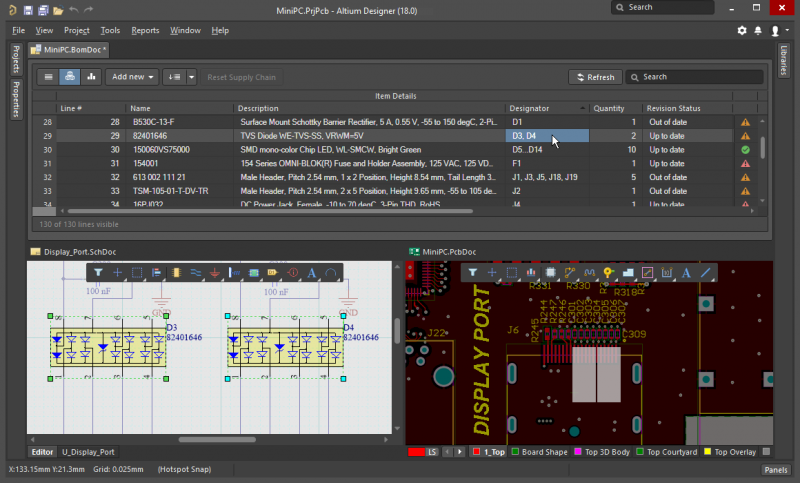
Design your power electronics, and source components, and create your PCB layout in Altium Designer.
You shouldn’t have to use separate programs for PCB layout, simulation, and circuit design to build your power converters. You can create power supply circuits with any topology and power converters using the best PCB design and layout tools in Altium Designer. Stay productive and create cutting-edge technology with Altium Designer.
Altium Designer on Altium 365 delivers an unprecedented amount of integration to the electronics industry until now relegated to the world of software development, allowing designers to work from home and reach unprecedented levels of efficiency.
We have only scratched the surface of what is possible to do with Altium Designer on Altium 365. You can check the product page for a more in-depth feature description or one of the On-Demand Webinars.

